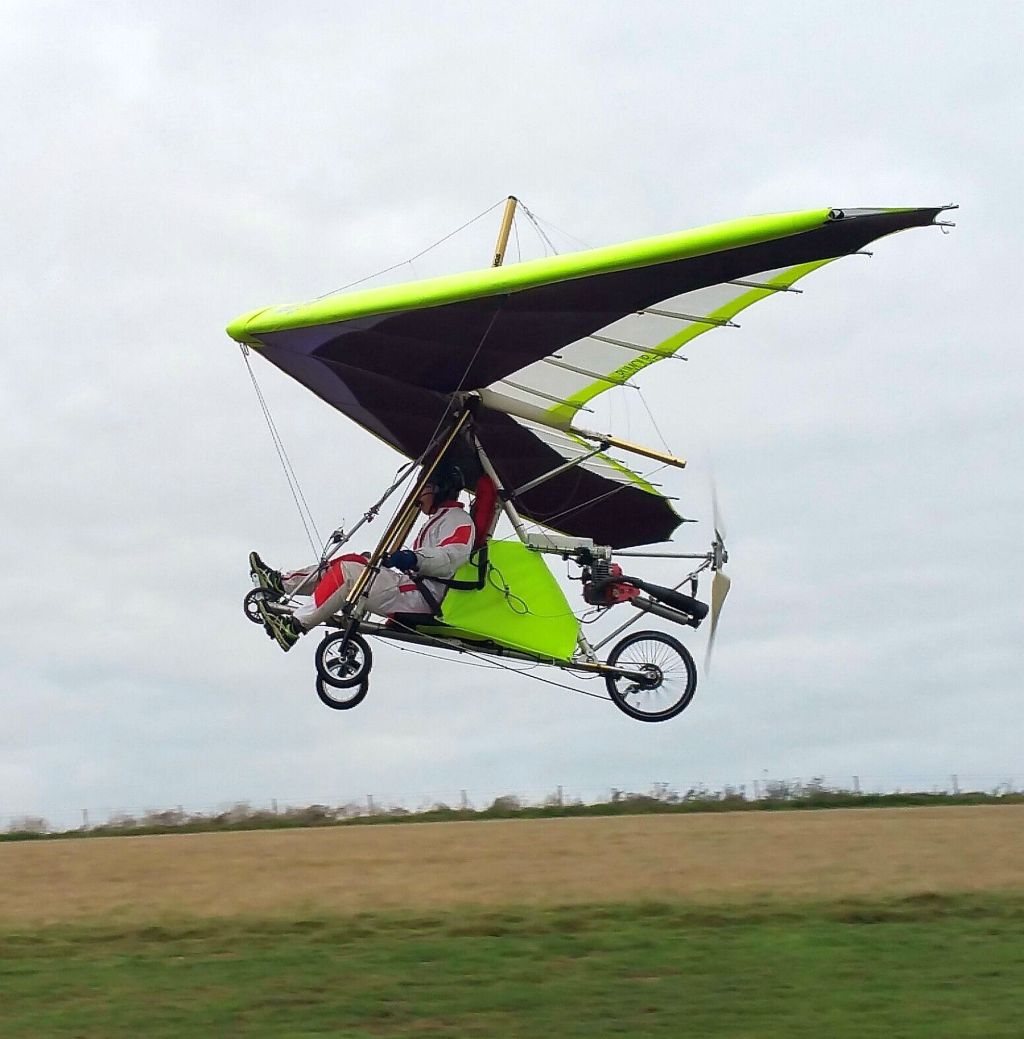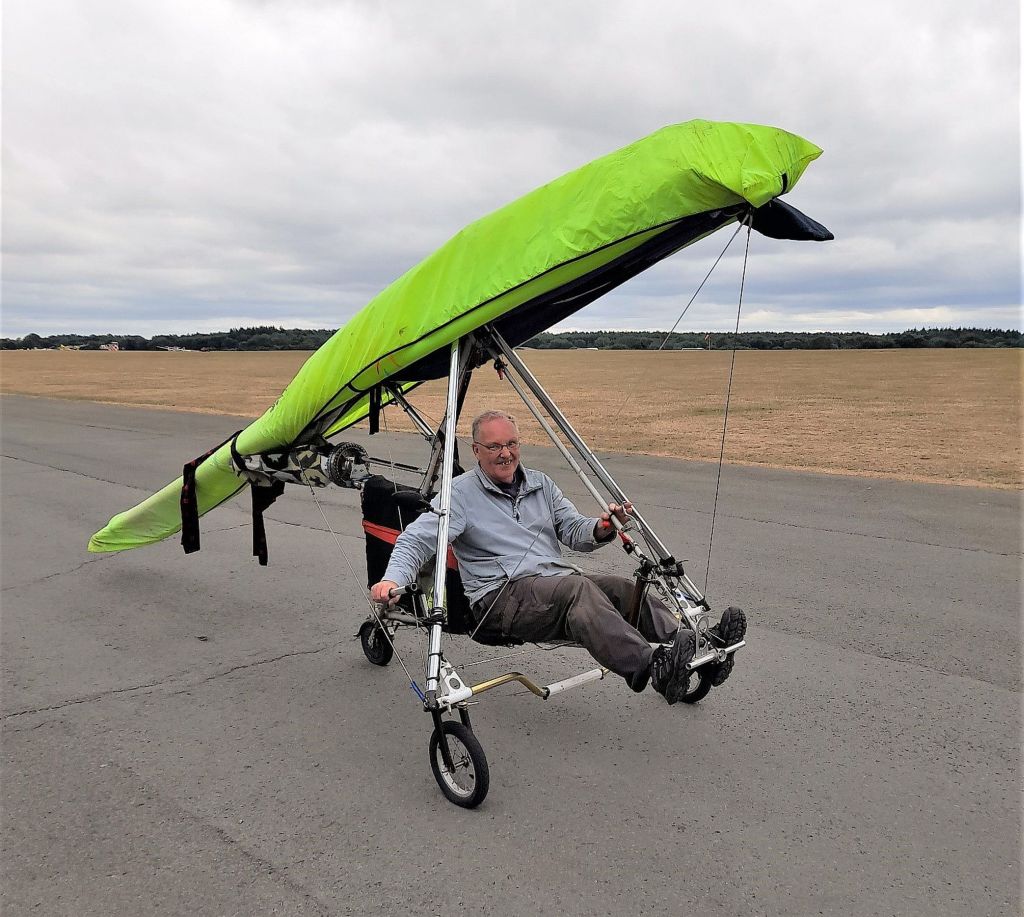Flycycle takes to the air

The ability to fly can give us access to unparalleled freedom and adventure. Flycycle, a ‘roadable’ microlight, is all set to create the magic of flying that has captured our imagination since the dawn of time. Ian Parker reports.
For the best chance of success, recreational vehicles must be convenient, fun and safe, whilst creating as little disturbance to other people as possible. Sport flying in a country such as the UK faces much resistance. People don’t like the noise or the vastly over-estimated perceived danger. Property owners near airfields want them closed because values leap by about 20% if it happens. Keeping aircraft on an airfield is expensive and often risky because of hangar rash and if kept outside, damage from bad weather and sometimes vandalism.

Other inconveniences include travelling to an airfield which may be quite distant, assembling or getting out the aircraft, getting fuel and trying to avoid noise and pollution complaints. Costs and other demands include licences, registration, medicals and insurance.
Microlight designer, Bill Brooks has built his Flycycle which greatly reduces many of these issues. Bill learned to fly hang-gliders at Dunstable in 1978 and it was at about that time the pilots started putting engines on them. He did a PhD at Cranfield in aircraft design and then did certification work on microlights, as they became known, under BCAR section S.
Is it a plane?
It’s essentially an electric road-going tricycle which can be kept in a garage when the wing is rolled up. Ground steering is via both front wheels, using a tiller handle on the right-hand side. It’s flown like a conventional flexwing microlight or hang glider.
The design has progressed in stages. It started off as purely pedal powered for the road, but a 75kg tricycle is hard going, like a rickshaw. It was redesigned with an e-scooter rear-wheel drive which is light and compact. These versions flew well with 10-15hp two-stroke petrol engines and a hang-glider wing.
It has now been converted to fully electric power for both road and flight modes, 250W for the road drive and 9kW for the flight motor. It has been tested with 50+ hours of flight time and several miles of off-highway trials around an airfield peri-track. The prototype doesn’t currently qualify as a UK electrically assisted pedal cycle (EAPC). However, the next stage is to fit a lightweight pedal generator so that it will have ‘pedals for propulsion’ as per the EAPC definition. Then it could be charged up and ridden from a home garage to a nearby flying field.

Flycycle is classed in the UK as a single seat deregulated aircraft (SSDR) which, weighing less than 75kg including parachute and having a stalling speed of less than 20 knots, is exempt from formal pilot licensing, aircraft registration or pilot medical certificate. Third party insurance can be provided through the British Hang and Paragliding Association (BHPA). Flight training is essential, available from a BHPA or BMAA registered school. It would take about 25 hours for an average ab initio student pilot to become competent.
It takes about 15 minutes to unfurl the wings and rig the aircraft for flight. About 5 minutes of pre-flight checks are essential. The take-off run is about 50m; for safety a field at least 150m long with clear approaches is needed. Under full power, it climbs at about 350ft/minute. It glides down at about 270ft/min.
Once airborne, the Flycycle will soar power-off just as well as any other powered hang-glider. Starting and stopping the motor simply requires operation of the power control lever. Switching an electric motor on and off is much easier and of less concern than starting and stopping a petrol engine which may fail to restart.
Fly yourself fitter
Flycycle also opens up some possibilities for human powered flight using energy storage. Current human powered aircraft are huge, fragile and limited to very low altitude in very light winds. They also require 3-5W/kg body weight power output, usually available only from a competitive cyclist/pilot. They usually take a team of at least three people to operate them and can’t generally fly cross country.
With a 2kWh battery pack, seven hours of pedalling at 300W would fully charge the battery. A full charge gives about 20 minutes powered flying time (with 10 minutes reserve) or about five hours ground running time. It would be possible to charge the battery by pedal power alone, take-off into a thermal, climb up to cloud base (typically 4,000-5,000ft) and fly cross-country. Pedalling in flight could increase the endurance by up to 10%. On landing, it would be possible to recover by road or continue an onward journey.

The aircraft solves many of the problems of flying small recreational types where the ‘faff to fun’ ratio can be very high. With Flycycle, the ‘faff’ is minimal and with the motor stopped in flight, the aircraft soars silently; the prop blades are folded back by the airflow once the motor is stopped to reduce drag - they fold forward again on restart by centrifugal effect. All the pilot has to do is power up or down.
You probably wouldn’t want to pedal it far with a flat battery, but it would likely be okay for several miles on a flat road. An alternative would be to have a spare charged battery on board while driving to the flying field and left on the ground. It could be swapped with the flat one to get you down.
Flycycle Mk4 has an electric scooter wheel on the back for ground propulsion and a Geiger HDP10 motor which produces 9kW at 1,900rpm from the propeller for flying. The 2kW/hr battery at 400W gives 10-15mph on the ground with a range of about 50 miles. Some 3.5kW in straight and level flying gives 20 minutes endurance. The current battery is a lithium polymer pack, but a 50% endurance increase can be obtained from a lithium-ion pack.
Flycycle is quite stable in road mode providing the rider is seated. In high winds it needs tethering when parked. Bill is currently offering plans for the aircraft and may consider production in future.
As with any new development, the market for the Flycycle is uncertain but the convenience element is much greater than with other recreational aircraft. Investors are wary of such aircraft projects as many fingers have been burnt in the past, but Flycycle seems to solve many of the problems besetting other attempts. Combined with good training on a conventional two-seat weight-shift microlight and a low accident rate, Flycycle could have a quiet, clean, convenient and soaring future!











